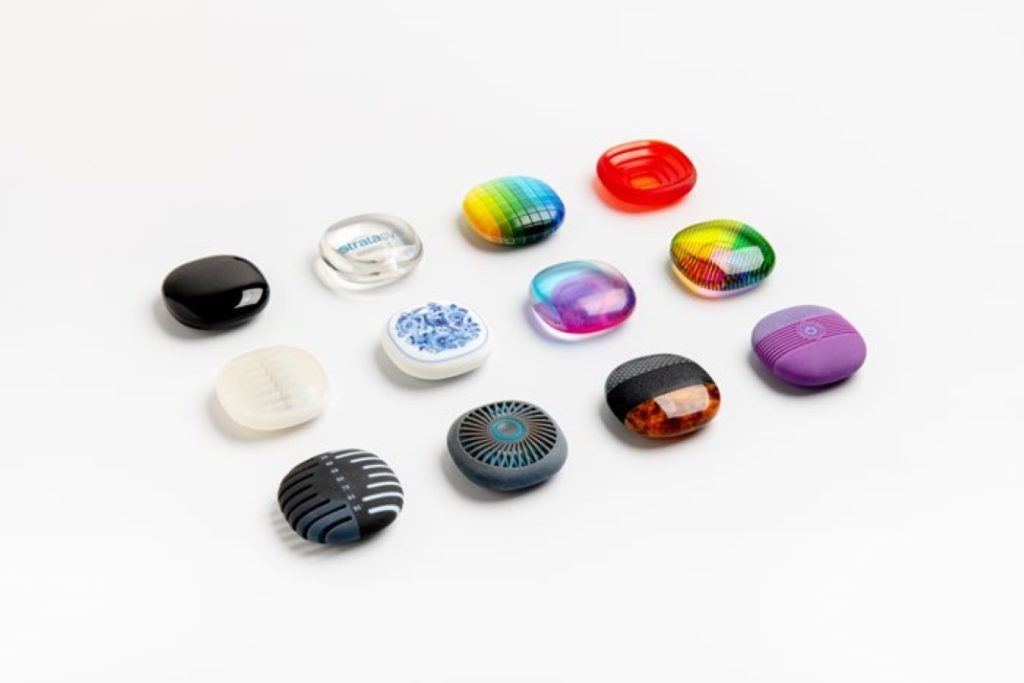London Design Festival 2013 opened this year under the title “Design Is Everywhere”. London Design Festival chairman Sir John Sorrell emphasized the need to raise awareness to design by drawing attention to the fact that design is an inseparable part of our everyday life and plays an important role in improving our quality of life.
This is the eleventh London Design Festival, and in recent years it is increasingly being crowned an apt alternative to Milan Design Week. In an article published in the New York Times Julie Lasky dubbed London the ‘design capital of the world’, and the director of the Design Biennale in Belgium dwelled on the organizational failures and the difficulties attending visiting an exhibition that evokes the feeling that most of the time you’re so preoccupied with exhausting logistics that you miss a lot of the events.
There’s no question that the fair in London is smaller than the one in Milan. The main exhibition, 100% Design, is a smaller (and much more visitor-friendly) version of the one in Milan. A considerable number of events are scattered around the city, some even crowding in one particular area (Brompton), which makes it possible to walk from one to another. But for those who are accustomed to the charged atmosphere of Milan Design Week, to an entire city changing its appearance and donning design – London seems somewhat subdued and not very festive.
A considerable number of installations and exhibitions created especially for the festival were on show at the Victoria & Albert Museum, the festival’s main partner. Lebanese designer Najla El Zein designed a screen made from 5000 paper windmills that covered the eight-meter high entrance. Each windmill was hand-folded and attached to a plastic shaft with a 3D-printed connector. The wind blowing through different parts of the screen creates wavelike movement and is accompanied by lights going on and off, simulating inhalation and exhalation.
The Wind Portal by Najla El Zein Studio at the V&A Museum, from Dezeen on Vimeo
Another large-scale object is a chandelier by Canadian designer Omer Arbel, which cascades thirty meters down from the ceiling of the first floor through a hole in the floor to the ground floor.
Omer Arbel, 28.280, an installation supported by Bocci, V&A Museum, from Disegno Magazine on Vimeo
New acquisitions made by the V&A Design Fund, which supports the acquisition of contemporary design objects, were on display in one of the museum’s spaces. Until now most of the acquisitions were furniture, but this year other objects were displayed: a 3D-printed plastic gun that drew most of the attention, and a toaster designed by Thomas Thwaites – one of the more interesting objects in the collection. Thwaites, a Royal College of Art graduate (2009), built a toaster from scratch using natural materials and home appliances which he connected and adapted, mimicking a production-line toaster he purchased in a store for less than five pounds. The toaster, which looks half-baked, is totally usable, but the interesting fact is that had the designer wanted to sell it, the price would have been £1,187.54.
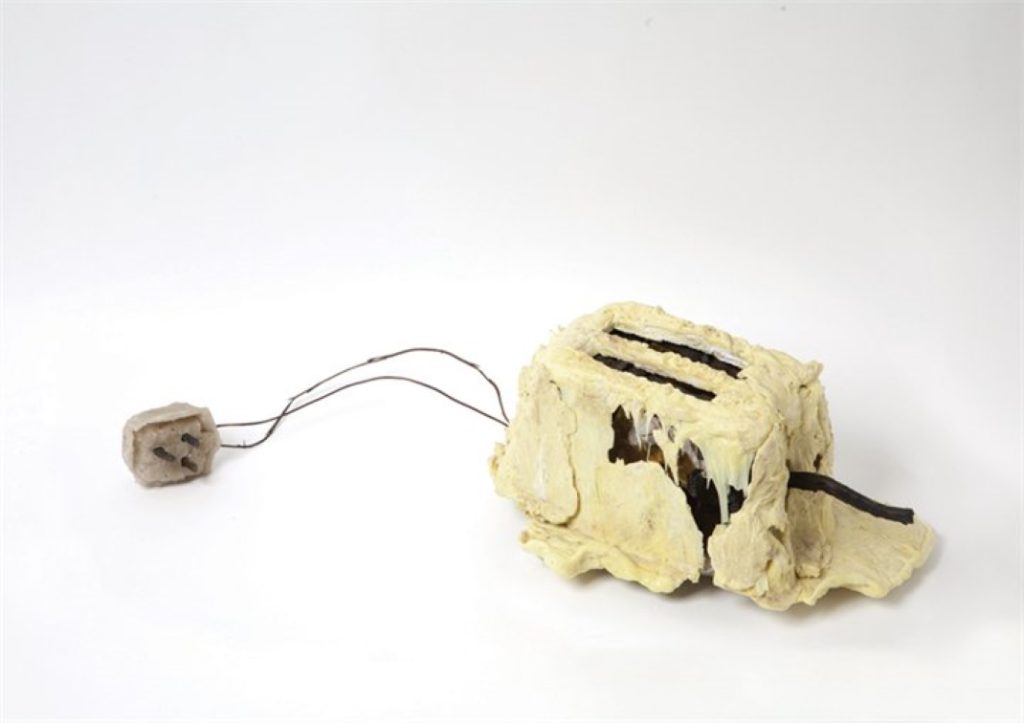
Showing in the Mint was an interesting exhibition entitled ‘Cabinets of Curiosity’. Designer David Amar showed Wallevich 2013, a wall-mounted cabinet composed of a series of wooden boxes meticulously made of bamboo ply with angled shelves. The composition of the boxes on the wall is inspired by Eight Red Rectangles, an oil on canvas painting by constructivist artist Kazimir Malevich from 1915. Mounting the boxes to form a rotated version of the original painting’s composition allows the shelves to become functional. According to Amar, this is how he links art to everyday life.
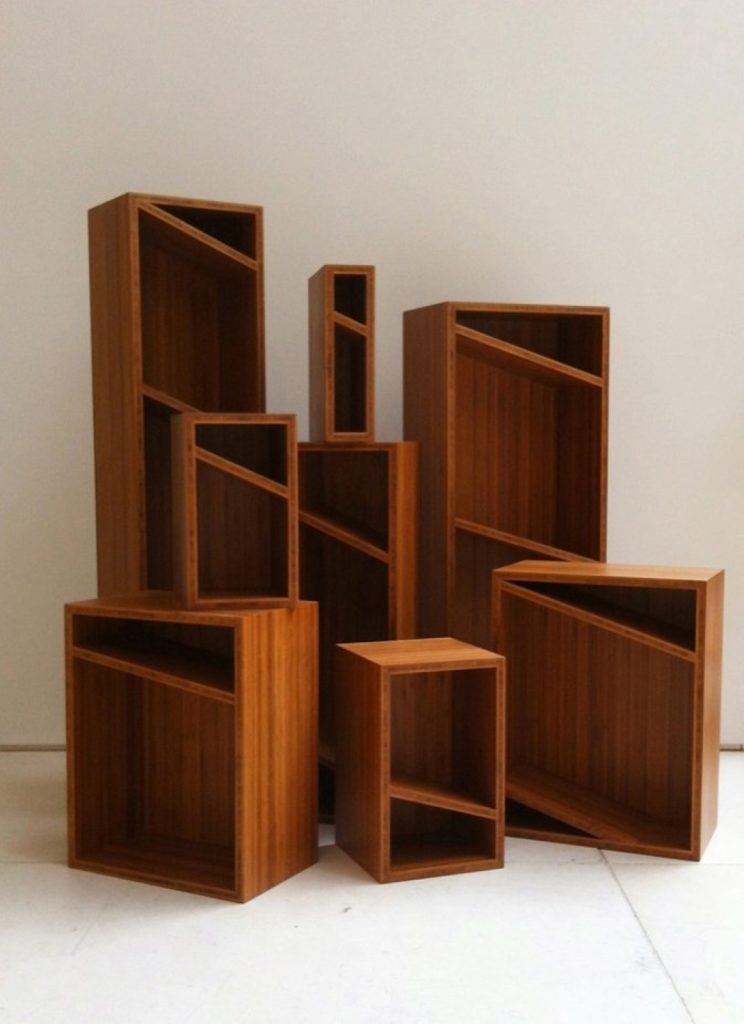
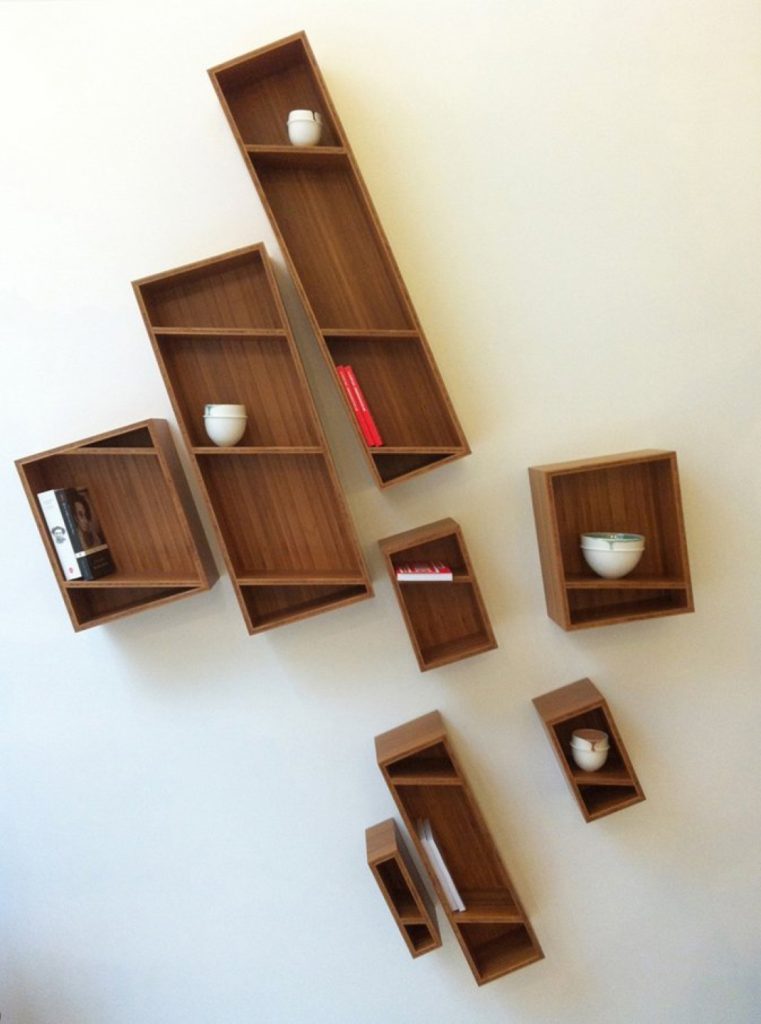
Another interesting exhibition is ‘Loose Thread’ by OKAY Studio, a broad collective of designers who graduated from the Royal College of Art. The group includes Yael Mer and Shay Alkalay, Oscar Narud, Peter Marigold, and others. Most of the works engage very freely in the subject of the exhibition – loose thread. Peter Marigold’s ball of string lamp is probably the most literal.
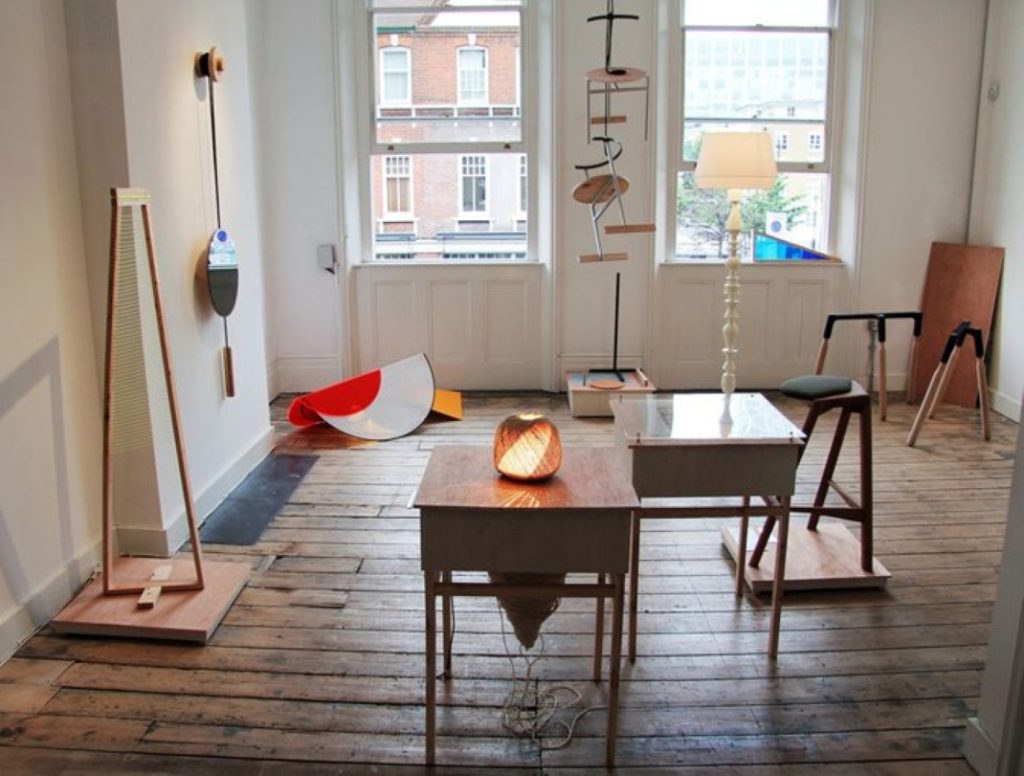
Gallery Libby Sellers showed a series of mirrors by designers Hunting & Narud. Launched at London Design Week, the series was designed by London-based Norwegian design duo Amy Hunting and Oscar Narud. The materials used to make the mirrors pay homage to Norway’s topographical heritage and local industries. The rounded shapes are inspired by the visual language and movement of celestial bodies.
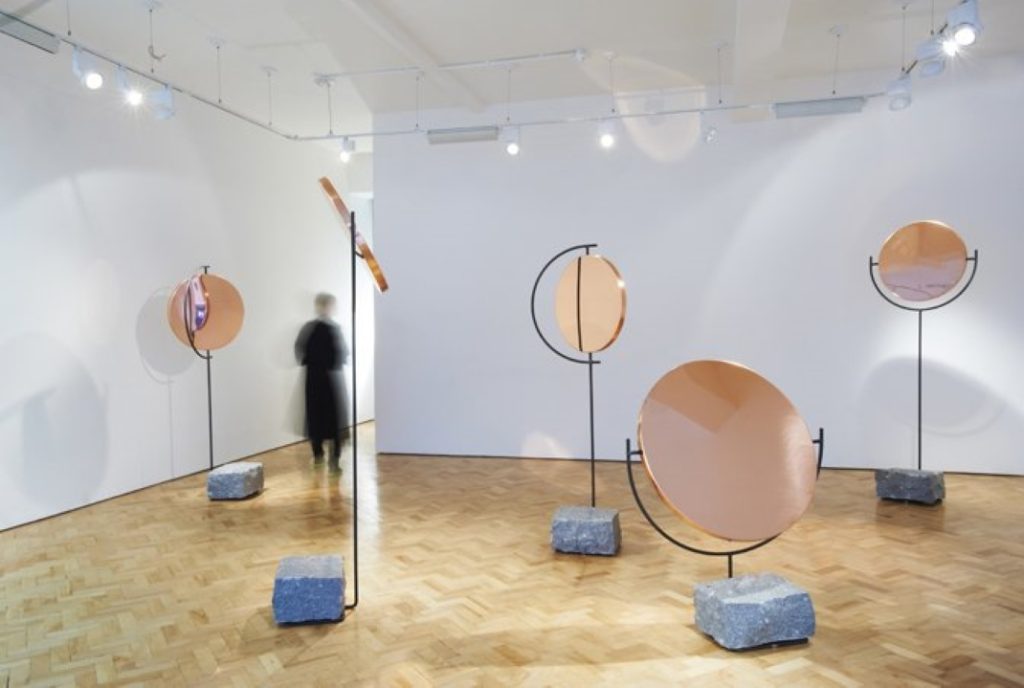
Designer Betha Laura Wood showed her first solo exhibition, ‘Zigzag : Crisscross’ at The Aram Gallery. Inspired by her travels in Mexico, Wood created a series of lighting elements and furniture that combine decorative Aztec elements with influences from industrial buildings in East London.
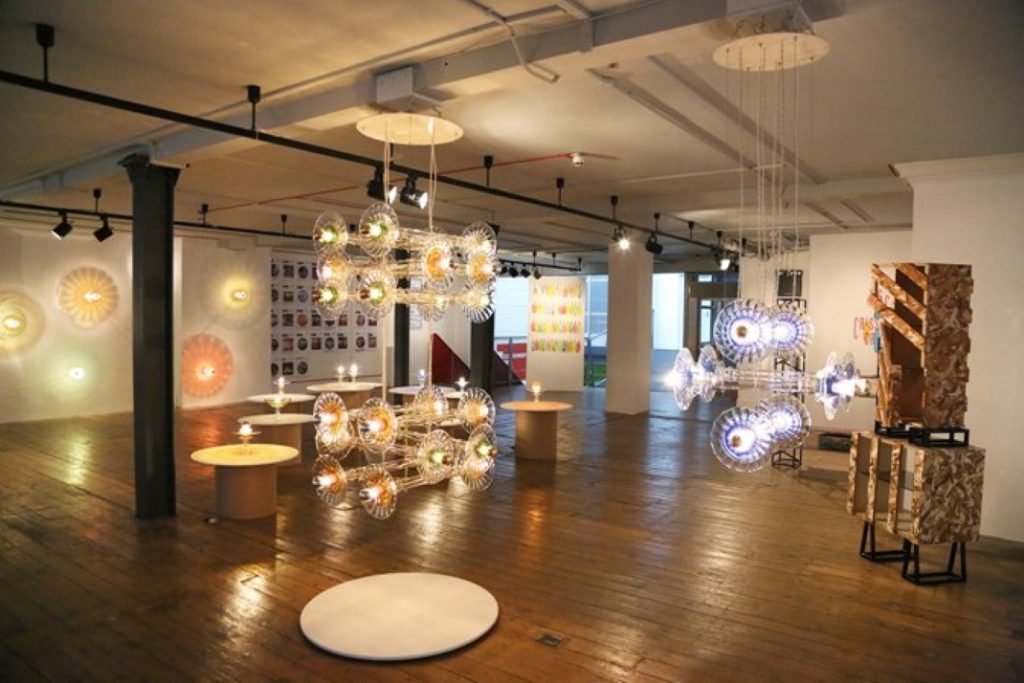
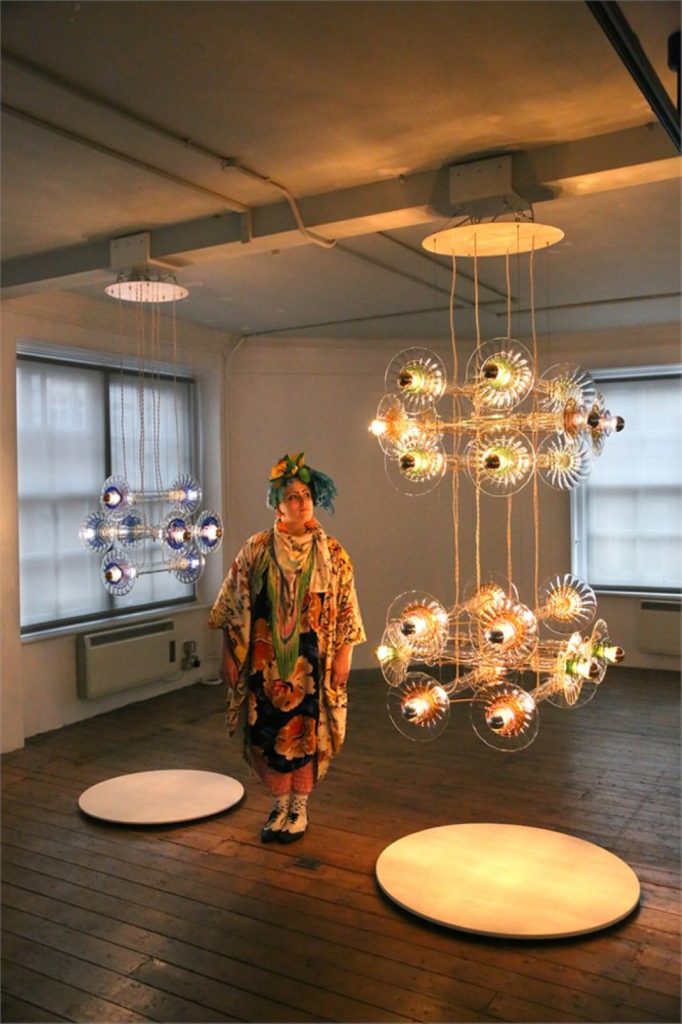
Some three hundred events were scattered all over London, some very interesting and inspiring a desire to return and see them again next year.


